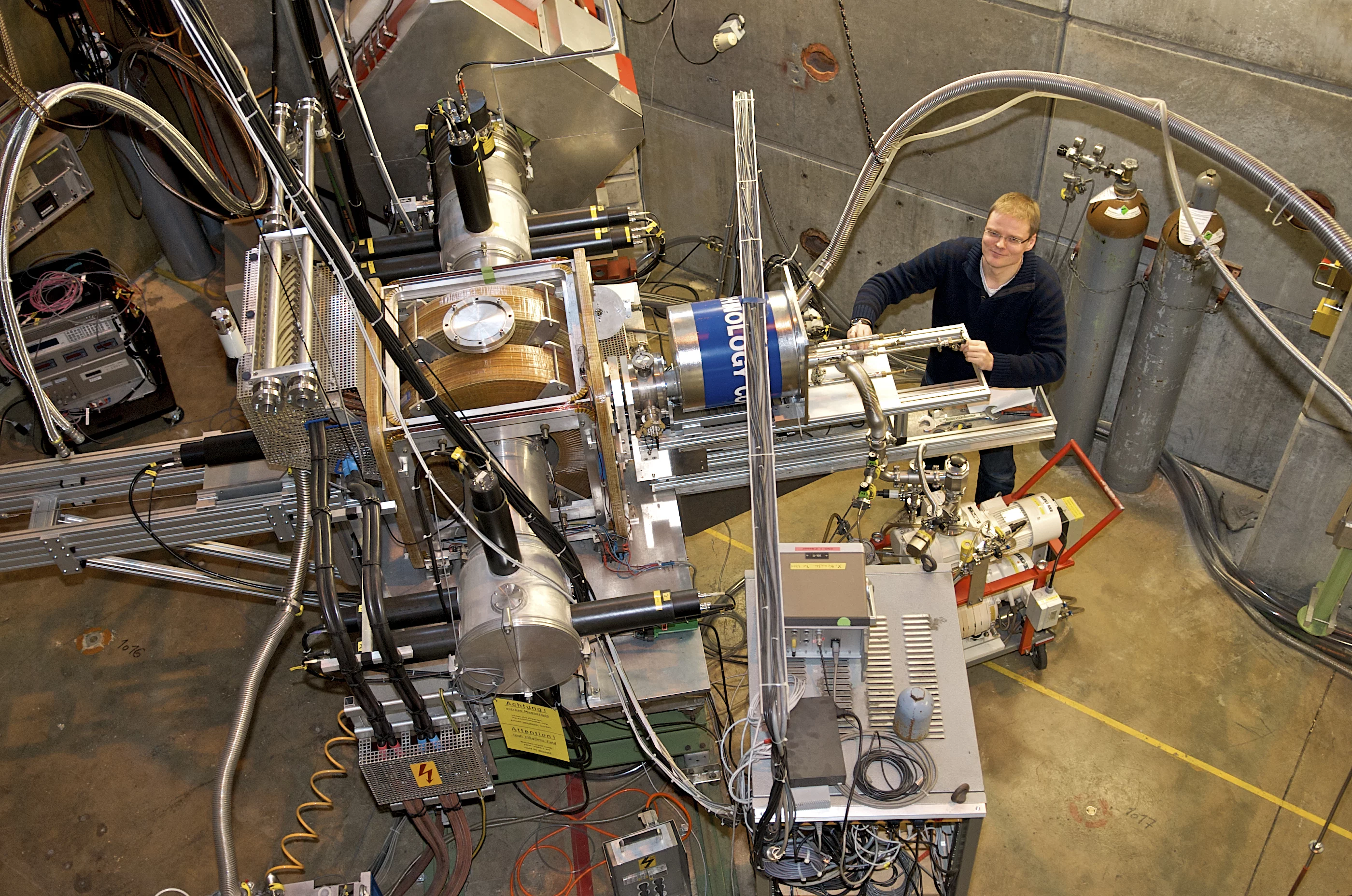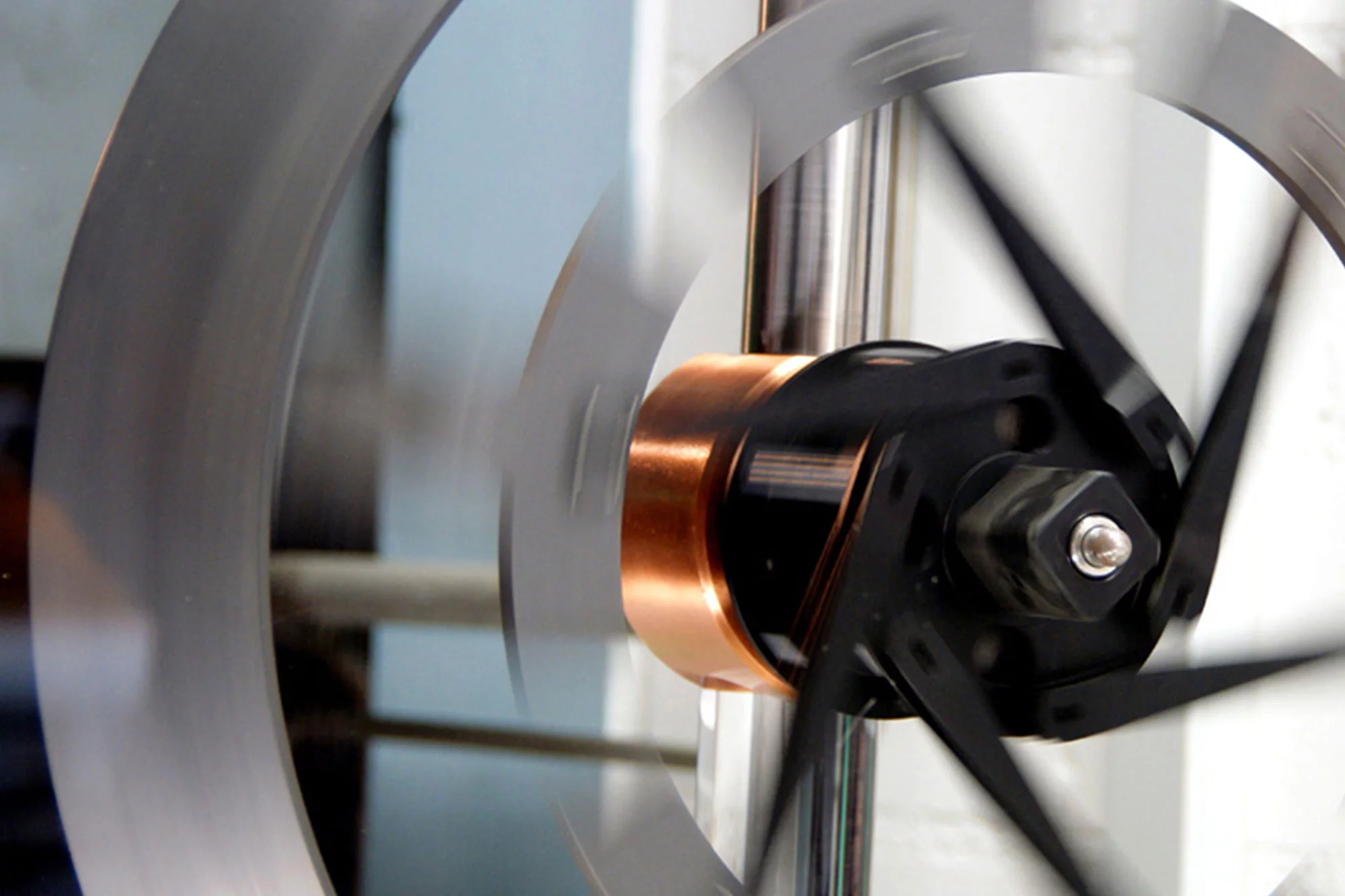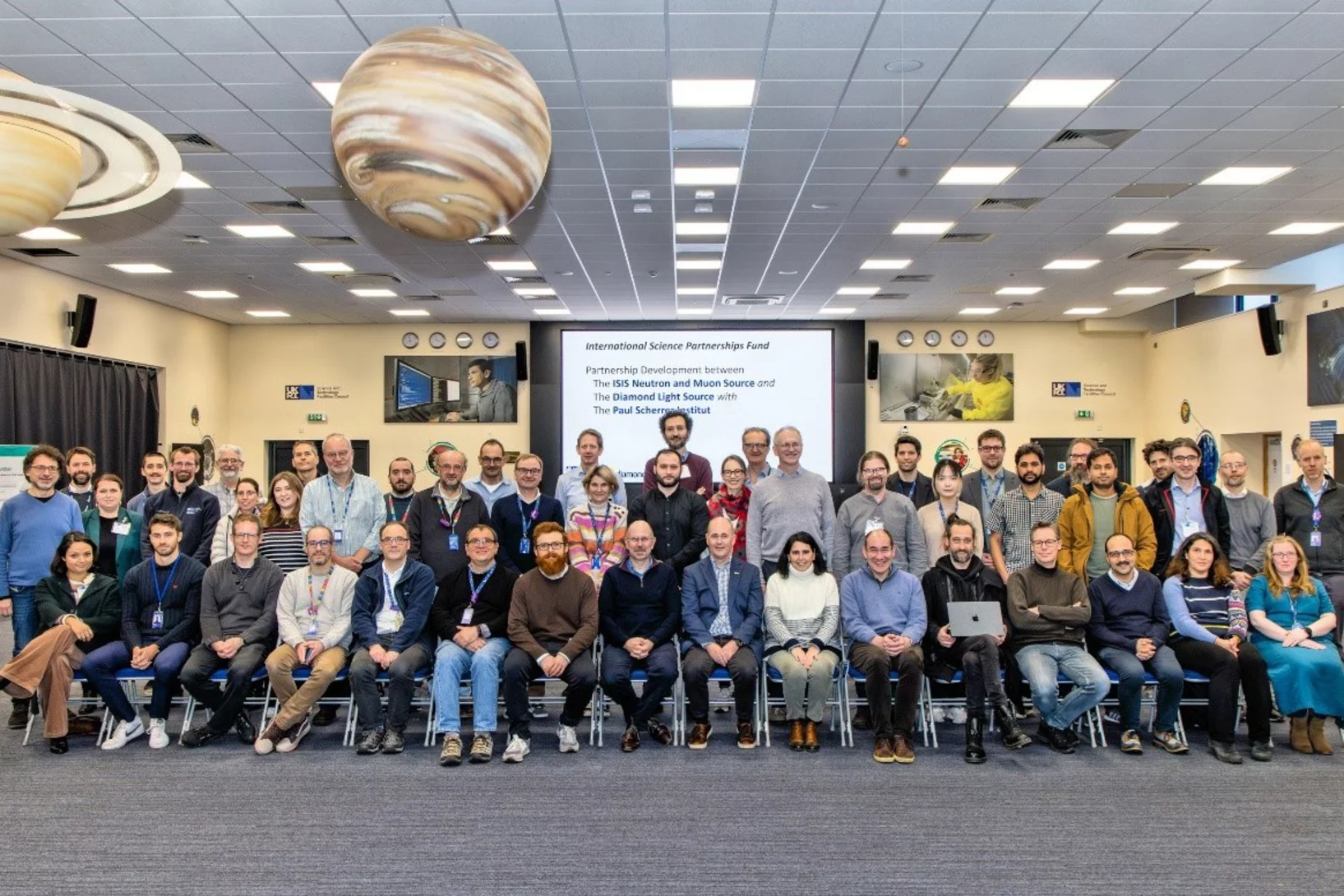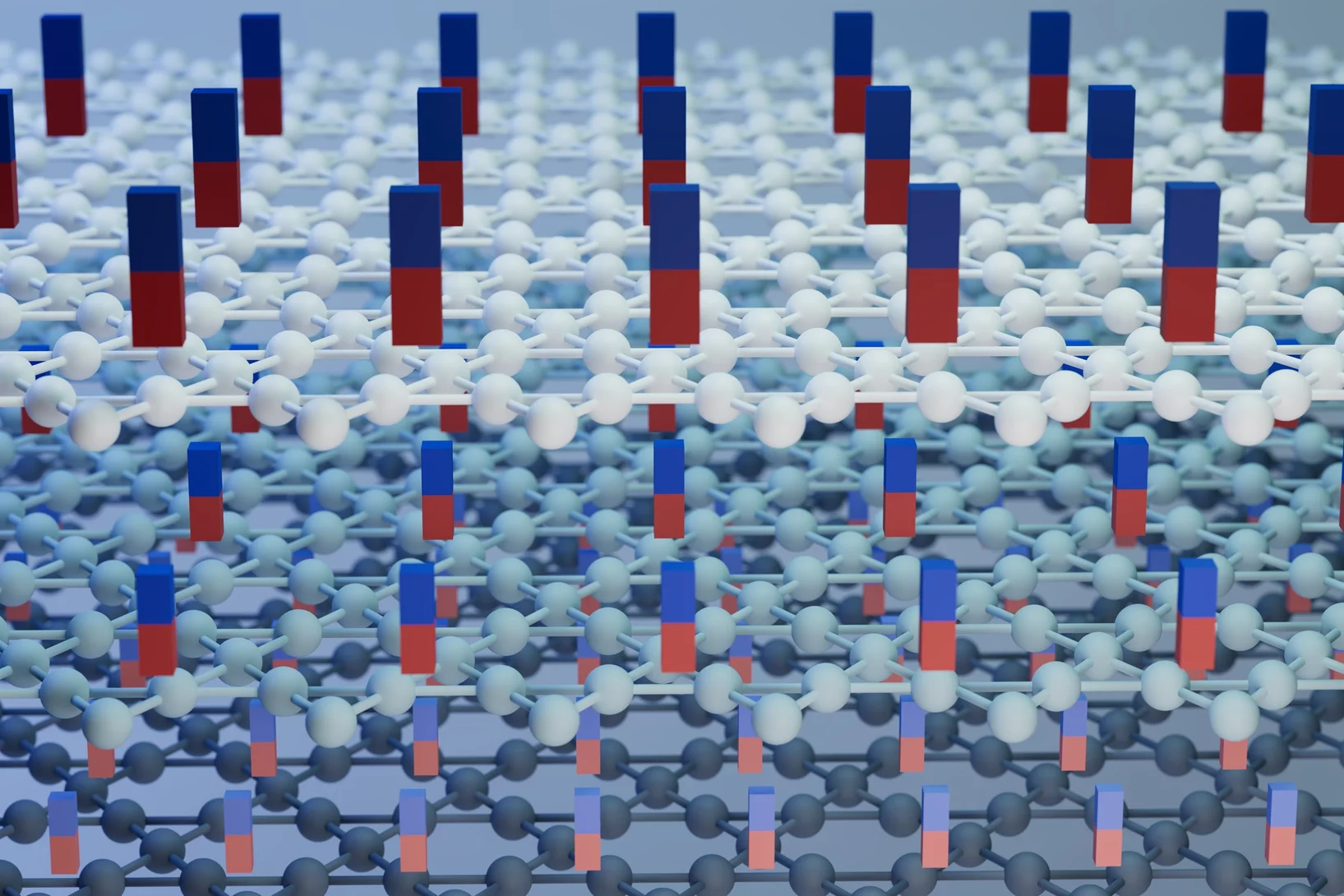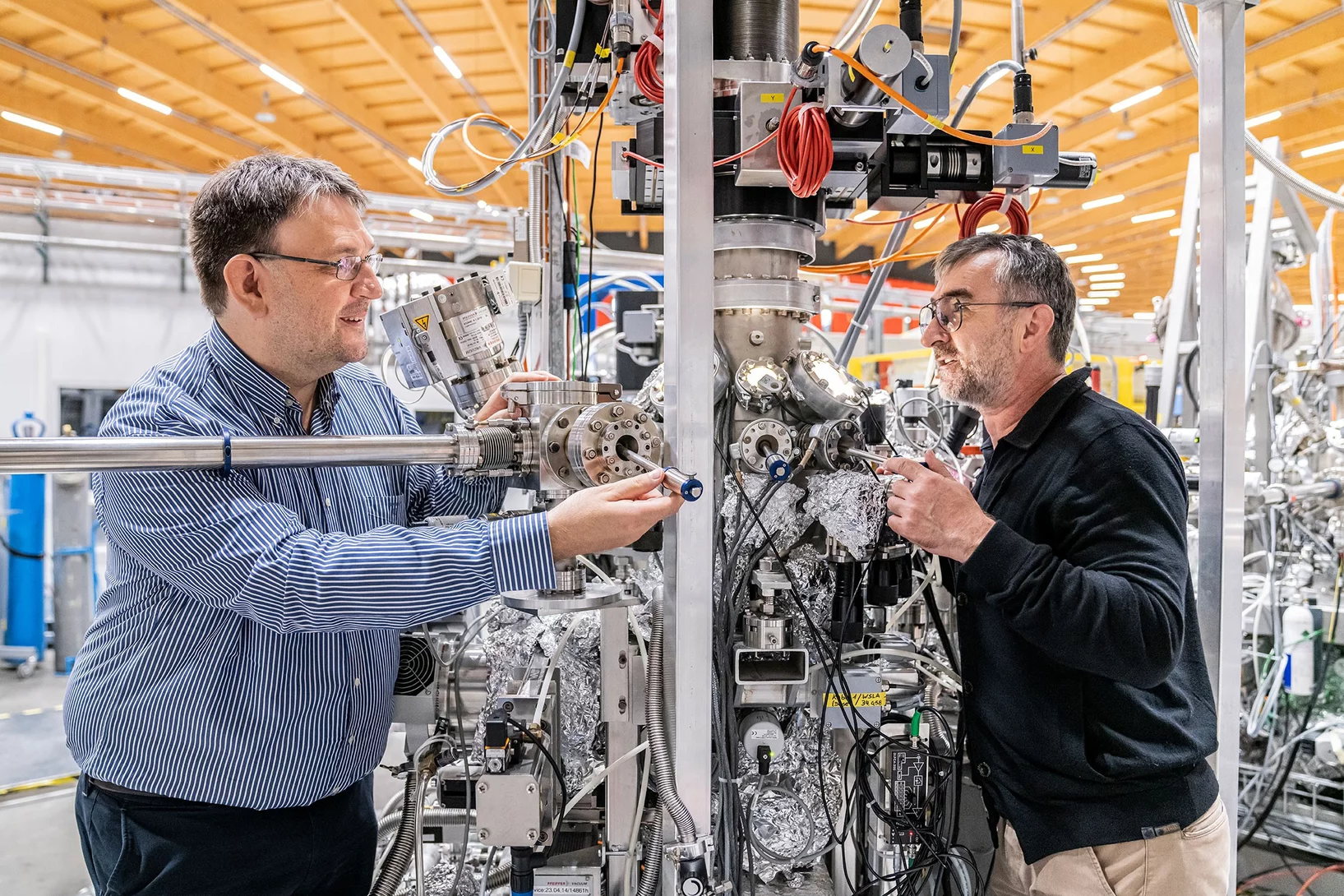Inside the muon source: fast protons hit a carbon target
Experiments with muons help to explain magnetic processes in solids or test the predictions of the Standard Model of elementary particle physics. Since muons decay into other particles in a few millionths of a second, they have to be produced continuously during experiments. This occurs at PSI in the SμS (es-myoo-es) muon source, at whose core are two carbon-ring targets that are struck by a beam of fast protons from PSI's proton accelerator facility.
Along its path, the beam first strikes one target, then the second, and then moves on to the lead target of the SINQ neutron source. Muons are generated by the collisions of protons with the carbon nuclei in the first two targets. PSI operates two muon targets because a single one could not supply enough muons for all the experiments being performed. The muons are guided with the aid of magnets to the individual measuring stations, of which there are currently six for experiments in solid-state physics using muons.
Muon production in detail: produce pions and wait for them to decay into muons
Strictly speaking, it is not muons which are generated during the collisions between protons and carbon nuclei, but initially other particles – pions. A pion then decays after about 26 nanoseconds (i.e. 26 billionths of a second) of a second into a muon and an appropriate neutrino – an electrically neutral particle which hardly interacts with matter and is not important for the experiments. The pions that are particularly important for generation of the positive muons used in solid-state physics experiments are those which collect on the surface of a target and remain there until they decay. Since these pions do not move, their two decay products fly apart in exactly opposite directions, with their kinetic energy originating from the missing mass
– muon and neutrino together have a lower mass than the pion, and the difference is then converted into kinetic energy according to Einstein's formula E=mc2.
This is not the only way of generating muons, but compared with other procedures it has crucial advantages for use in solid-state research. Firstly, all muons generated in this manner are polarised – i.e. they all spin in the same direction. Since the experiments on magnetism depend on the direction of spin, and hence would in any case need polarised muons, this characteristic clearly simplifies the design of the experiments. And secondly, muons generated in this way are so slow that during the experiment they come to a standstill in the sample being investigated. Muons generated with high-energy physics procedures would simply travel straight through samples of this kind. PSI is the only institution in the world offering experimental opportunities with muons which are even slower that those emerging directly from pion decay, where a special process has to be used to decelerate the muons to much lower speeds. Thin film structures, for example, or surfaces can then be investigated using these muons.
Muons created during the decay of pions in flight are also used for individual experiments. This applies particularly to negatively charged muons, which cannot be generated in the foregoing manner. Particle physicists also use some of the pions themselves.
Further Information
News
Together for Science with Neutrons, Muons and X-rays
Strategic partnership between research facilities in UK and Switzerland will create new capabilities to address global challenges using neutrons, muons and X-rays.
Kagome breaks the rules at record breaking temperatures
Discovery of quantum phenomenon at accessible temperatures could be useful for quantum technologies.
Magnetism in thin layers: One electron makes the difference
An important step towards novel computer memory

